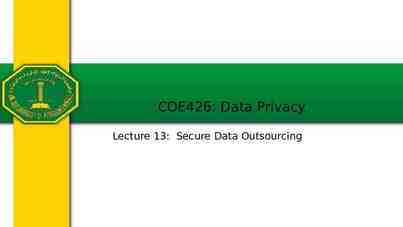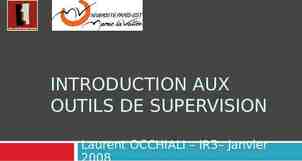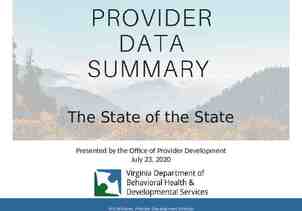CRUCIAL ELEMENTS IN DEVELOPING MARYLAND’S SIMULATION EDUCATION LEADERS
14 Slides931.92 KB

CRUCIAL ELEMENTS IN DEVELOPING MARYLAND’S SIMULATION EDUCATION LEADERS SABRINA BEROZ, DNP, RN, CHSE MARYLAND CLINICAL SIMULATION RESOURCE CONSORTIUM AUTHORIZED UNDER THE AUSPICES OF THE NURSE SUPPORT PROGRAM II (NSP II) AND JOINTLY APPROVED BY THE HEALTH SERVICES COST REVIEW COMMISSION (HSCRC) AND THE MARYLAND HIGHER EDUCATION COMMISSION (MHEC).

DISCLOSURES Conflict of Interest : Sabrina Beroz (Nurse Planner, Content Expert and Faculty) reports no conflict of interest. This work is authorized under the auspices of the Nurse Support Program II (NSP II) and jointly approved by the Health Services Cost Review Commission (HSCRC) and the Maryland Higher Education Commission (MHEC). Hosted by Montgomery College

OBJECTIVES Upon completion of the presentation, the participants will be able to: Discuss salient factors impacting the quality of simulation practices. List the key findings from the survey of simulation programs in Maryland. Identify the crucial elements in developing simulation education leaders.

BACKGROUND Development of commercially available high fidelity simulators NLN Jeffries Simulation Framework NLN Jeffries Simulation Theory INACSL Standards of Best Practice: SimulationSM (2011, 2013, 2015, 2016) NCSBN National Simulation Study (Hayden et al., 2014) NCSBN Simulation Guidelines for Prelicensure Nursing Programs (Alexander et al., 2015)

DESCRIPTIVE MIXED METHOD STUDY Purpose: Identify faculty and program development needs in simulation-based education. Method: Structured interview process with a survey for data collection. Survey: NCSBN simulation guidelines for faculty and program preparation (checklists). “The Foundation” (Beroz, 2017)

GUIDELINE Administrative KEY RESULTS Budgetary plan for sustainability: 30% (Human, fiscal and materials) Plan for curriculum integration and evaluation of simulation: Curriculum integration 59% Evaluation process for quality improvement 59% Faculty Development Dedicated-trained simulation faculty 22% Simulation based on educational theory 33% INACSL Standards of Best Practice: Simulation Formal debriefing training 44% Use of theory-based debriefing method 37% Debriefing competence assessed 26% Beroz, 2017

CRUCIAL ELEMENTS IN DEVELOPING SIMULATION EDUCATION LEADERS EXPERT SEL III: Leadership SEL II: Advanced SEL I: Foundations Train the Trainer

SIMULATION EDUCATION LEADER (SEL) BUILDING SUSTAINABILITY IN ACADEMIA AND PRACTICE SEL I (Novice) Foundations Theory SEL II (Competent) SEL III (Expert) Curriculum Integration Standards Advanced Debriefing Methods Evaluation Three Day Train the Trainer Program Leadership Scholarship Certification http://cms.montgomerycollege.edu/mcs Benner, 2001

OUTCOMES SIX MONTHS POST TRAIN THE TRAINER 100% 90% 80% 70% 60% NLN JST INACSL SOBP TB Debriefing Method 50% 40% 30% 20% 10% 0% Pre- TtT SEL II SEL III

QUALITATIVE DATA SEL II Standardized prebriefing Establish safe environment Training faculty Curriculum integration of simulation SEL III Developing curriculum maps Evaluating simulations Evaluating debriefing competence Simulation Committee formation Developing policies/procedures

DEVELOPING SUSTAINABILITY Scholarship Train the Trainer program and workshops Leadership and Teamwork SIM-Talks and SIM-Teach Certification Certified Healthcare Simulation Educator

QUESTIONS

REFERENCES Alexander, M., Durham, C., Hooper, J., Jeffries, P., Goldman, N., Kardong-Edgren, S., Tillman, C. (2015). NCSBN simulation guidelines for prelicensure nursing programs. Journal of Nursing Regulation, 6, 39-42. Benner, P. (2001). From novice to expert: Excellence and power in clinical nursing practice. Commemorative Edition. Upper Saddle River, NJ: Prentice-Hall Health. Beroz, S. (2017). A statewide survey of simulation practices using the NCSBN simulation guidelines. Clinical Simulation in Nursing, 13, 270-277. Hayden, J., Smiley, R., Alexander, M., Kardong-Edgren, S., & Jeffries, P. (2014). NCSBN national simulation study: A longitudinal, randomized, controlled study replacing clinical hours with simulation in prelicensure nursing education. Journal of Nursing Regulation, 5, S1-S64.

CONTACT Sabrina Beroz Montgomery College [email protected] 240-567-5547






